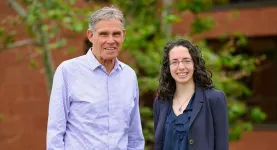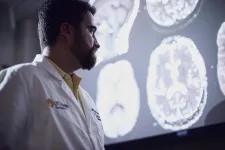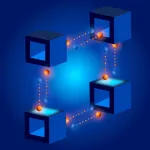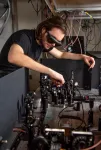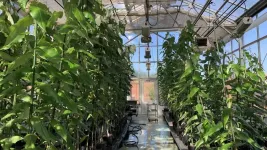(Press-News.org) TUCSON, Ariz., July 12, 2023 — Critical Path Institute (C-Path) announced today that the Coordination of Rare Diseases based at Sanford Research (CoRDS), in partnership with Cure MITO, will contribute its mitochondrial disorders data from its international patient registry to the C-Path-managed Rare Disease Cures Accelerator-Data and Analytics Platform (RDCA-DAP®).
RDCA-DAP provides a centralized and standardized infrastructure to support and accelerate rare disease characterization targeted to accelerate clinical drug development. Additionally, the platform advances best practices to support the rigorous conduct of natural history studies, with attention to established data quality standards, in order to be most useful to clinical trial design and regulatory review. It includes a robust, integrated database and analytics hub that allows for the aggregation of rare disease data from various sources and the efficient and effective interrogation of that data.
“We are excited to collaborate with Sanford Research, integrating the invaluable patient data they collected to help drive research for rare mitochondrial disorders including Leigh syndrome,” said Alexandre Bétourné, Ph.D., Pharm.D., Executive Director, RDCA-DAP. “This partnership demonstrates our shared commitment towards eliminating information silos in the field of rare mitochondrial disorders and an important milestone achieved through our collaboration with the Cure Mito Foundation.
“Data sharing is critical for being able to help patients with the urgency they deserve. When we launched the Leigh syndrome patient registry, our vision was not only to offer hope for the future but to provide value to our community all along,” said Sophia Zilber, Board Member, Patient Registry Director, Cure MITO. “Indeed, in less than two years, the data we have collected has been presented at conferences around the world, shared with researchers and industry partners, and utilized to contact potential study participants numerous times. We are thrilled to expand this progress by contributing our data to RDCA-DAP and are so grateful to both CoRDS and C-Path for their support and partnership.”
Since its inception, CoRDS has dedicated itself to coordinating the advancement of research into more than 10,000 rare diseases, working with patient advocacy groups, individuals, and researchers. The registry captures health information from diagnosed and undiagnosed patients, unaffected carriers, and at-risk patients. This valuable database connects researchers and patients and alerts participants of emerging clinical trials.
“We are excited to join forces with C-Path and contribute our registry data to RDCA-DAP,” said David Pearce, Ph.D., President of Sanford Research. “This collaboration will certainly advance our common goal — to accelerate research and treatment options for patients with rare diseases.”
Organizations interested in contributing data to RDCA-DAP can visit c-path.org/rdca-dap or email rdcadap@c-path.org. The platform is now OPEN and accepting applications for use; visit portal.rdca.c-path.org to apply and learn more.
About Critical Path Institute
Critical Path Institute (C-Path)is an independent, nonprofit organization established in 2005 as a public and private partnership. C-Path’s mission is to catalyze the development of new approaches that advance medical innovation and regulatory science, accelerating the path to a healthier world. An international leader in forming collaborations, C-Path has established numerous global consortia that currently include more than 1,600 scientists from government and regulatory agencies, academia, patient organizations, disease foundations, and hundreds of pharmaceutical and biotech companies. C-Path U.S. is headquartered in Tucson, Arizona and C-Path in Europe is headquartered in Amsterdam, Netherlands with additional staff in multiple other locations. For more information, visit c-path.org.
Critical Path Institute is supported by the Food and Drug Administration (FDA) of the Department of Health and Human Services (HHS) and is 55% funded by the FDA/HHS, totaling $17,612,250, and 45% funded by non-government source(s), totaling $14,203,111. The contents are those of the author(s) and do not necessarily represent the official views of, nor an endorsement by, FDA/HHS or the U.S. Government.
Contact:
Kissy Black
C-Path
615.310.1894
kblack@c-path.org
END
Sanford health rare disease data registry partners with C-Path’s RDCA-DAP, cure Mito Foundation to aggregate rare disease data in platform
2023-07-13
ELSE PRESS RELEASES FROM THIS DATE:
Scripps Research receives momentous award from NIH to lead key programs in national All of Us Research Program
2023-07-13
LA JOLLA, CA—Scripps Research announced today that the National Institutes of Health (NIH) has renewed funding for its Translational Institute to continue its work enrolling and engaging participants in the All of Us Research Program. The initial funding of $54 million will support Scripps Research Translational Institute’s work with a nationwide consortium to help build one of the largest, most diverse health research resources of its kind. The project is expected to last five years, with anticipated total funding ...
Astronomers identify the coldest star yet that emits radio waves
2023-07-13
Astronomers at the University of Sydney have shown that a small, faint star is the coldest on record to produce emission at radio wavelength.
The ‘ultracool brown dwarf’ examined in the study is a ball of gas simmering at about 425 degrees centigrade – cooler than a typical campfire – without burning nuclear fuel.
By contrast, the surface temperature of the Sun, a nuclear inferno, is about 5600 degrees.
While not the coldest star ever found, it is the coolest so far analysed using radio astronomy. The findings are published today in The Astrophysical Journal.
Lead author and PhD student in the School of Physics, Kovi Rose, said: “It’s very rare ...
UT Health Science Center San Antonio develops tool that counts brain lesions in seconds
2023-07-13
SAN ANTONIO (July 13, 2023) — An artificial intelligence (AI) tool developed at The University of Texas Health Science Center at San Antonio accurately counts brain lesions on MRI scans within seconds. Once it is adapted to the clinic, the AI tool should help neuroradiologists to evaluate patients’ brain diseases at earlier stages.
“Certain kinds of brain lesions are tremendously difficult to quantify without AI,” said researcher Mohamad Habes, PhD, of the health science center’s Glenn Biggs Institute for Alzheimer’s and Neurodegenerative ...
New ways of getting to the heart of the matter
2023-07-13
Peter Keyel, an associate professor in Texas Tech University’s Department of Biological Sciences, has received an Innovative Project Award from the American Heart Association to study atherosclerosis, the condition that causes arteries to thicken and can trigger a variety of devastating health complications.
Statistics indicate diseases linked to atherosclerosis are the leading cause of death in the U.S. with as many as half of Americans between the ages of 45 and 84 having the condition but being unaware of its slow progression and ...
Researchers establish criterion for nonlocal quantum behavior in networks
2023-07-13
A new theoretical study provides a framework for understanding nonlocality, a feature that quantum networks must possess to perform operations inaccessible to standard communications technology. By clarifying the concept, researchers determined the conditions necessary to create systems with strong, quantum correlations.
The study, published in Physical Review Letters, adapts techniques from quantum computing theory to create a new classification scheme for quantum nonlocality. This not only allowed the researchers to unify ...
Youth of color turn to TikTok for diet, fitness information
2023-07-13
FOR IMMEDIATE RELEASE
Thursday, July 13, 2023
Contact:
Jillian McKoy, jpmckoy@bu.edu
Michael Saunders, msaunder@bu.edu
##
Youth of Color Turn to TikTok for Diet, Fitness Information
A new study found that social media platforms, particularly TikTok and Instagram, are ideal spaces to educate and guide US youth of color on healthy weight management and ultimately reduce racial inequities in obesity.
Nearly 1 in 4 adolescents in the United States experienced obesity from 2017 to ...
Controlling quantum randomness from the vacuum
2023-07-13
A team of researchers from the Massachusetts Institute of Technology has achieved a milestone in quantum technologies, demonstrating for the first time the control of quantum randomness.
The team of researchers focused on a unique feature of quantum physics known as "vacuum fluctuations". You might think of a vacuum as a completely empty space without matter or light. However, ...
Building a better forest tree with CRISPR gene editing
2023-07-13
Researchers at North Carolina State University used a CRISPR gene-editing system to breed poplar trees with reduced levels of lignin, the major barrier to sustainable production of wood fibers, while improving their wood properties. The findings – published in the journal Science – hold promise to make fiber production for everything from paper to diapers greener, cheaper and more efficient.
Led by NC State CRISPR pioneer Rodolphe Barrangou and tree geneticist Jack Wang, a team of researchers used predictive modeling to set goals of lowering lignin levels, increasing the carbohydrate to lignin (C/L) ratio, and increasing the ratio of two important ...
Special Issue: A machine-intelligent world
2023-07-13
In this special issue of Science, nine pieces – including Perspectives, Policy Forums, and Reviews – highlight recent advancements in artificial intelligence (AI) technologies and how they’re being used to answer novel questions in topics ranging from human health to animal behavior. However, the recent widespread adoption of AI in these areas is not without unique ethical concerns and policy challenges. “By looking to the forefront of how AI is being used in science and society, many grand challenges and benefits appear,” writes Gemma Alderton, deputy editor at Science.
AI-predicted ...
Genetic editing of wood for sustainability
2023-07-13
Despite the importance of wood fibers to meet the growing demand for renewable tissue, paper, packaging, textile, and other fiber products, wood fiber production has been less efficient and productive than researchers have hoped. Now, CRISPR editing has enabled scientists to design wood in which lignin – which must be cleaved and dissolved so fiber production can take place – is more suitable for fiber production. “The edited wood alleviates a major fiber-production bottleneck … and could bring unprecedented operational efficiencies, bioeconomic ...
